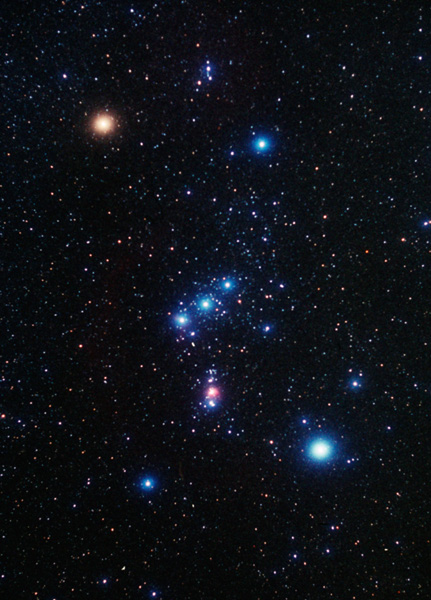Legendary story about the majestic Orion constellation
The brightest constellation that dominates the night sky this week appears in the south around 9 pm (local time). It is not another constellation but the constellation of Orion Hunters. But who exactly is he?
Similar to the case of the great God of the Sea, Orion's image is associated with ancient cultures, embodied in national heroes, warriors and demigods. However, on the contrary to Hawaiian, who is enrolled in a series of brilliant achievements, Orion is just a dim figure in the dark with us.
Ancient myths about Orion exist a lot but are also very messy, making it almost impossible to choose a credible story. Even the origin of the name Orion is ambiguous, although some scholars believe it is related to the Greek name 'Arion', meaning warrior. However, they all agree that Orion is the greatest hunter in the world, he is always described by the stars with a high-pitched baton.
On his left arm was the skin of a large lion he hunted, he swung it in front of Taurus Taurus, who was stabbing him down.
Where the stars are born
Under the belt of three famous Orion stars are undoubtedly one of the most exotic beautiful objects in the sky: the Great Orion Nebula Nebula. It seems to surround the star in the middle of the fainter triad, which lies in the line of the hunter's sword.
The nebula cannot be seen with the naked eye, the star itself is somewhat faint. We can see it with a good type of binoculars and a small telescope, which will embody a brilliant blue-gray mist that surrounds the star. With a larger telescope, we will see it in the form of an unusually luminous cloud.
 Orion constellation (Photo: io81.com)
Orion constellation (Photo: io81.com)
The nebula emits a kind of ultraviolet light due to fluorescence from the strong ultraviolet radiation of four hot stars entangled within it. Edward Emerson Barnard (1857-1923), an astronomer at the Yerkes Observatory, once remarked that the nebula reminded him of a giant spooky bat; He always experiences the feeling of surprise every time he sees it.
The Great Orion Nebula Nebula is a massive cloud filled with glowing dust and gas, which is located about 1,600 light-years away, about 30 light-years across (about 20,000 times larger than the entire solar system. times). Astrophysicists now believe that this object is the 'star incubator' - the primordial chaos from which star formation is carried out.
With vivid colors
One of the joys of watching stars is to discover and enjoy the diverse colors of the stars in the night sky. It is these colors that bring visual evidence directly to explain the variation in stars' temperature.
For the constellation Orion, the red and Rigel colored Beteguese gives excellent color contrast but we can still detect other colors. Take a look at Aldebaran with a slightly orange color and light yellow Pollux. Located quite separate from the winter binoculars, the sparkling Arcturus hummingbird, it is often considered a spring star, but now in the middle of the winter it appears around 10.30 to 11pm and quickly shines brightly in the sky. northeast.
Even if you observe these delicate colors, do you realize that they can only be recognized by the brightest stars? It is because of the physiological function of the eyes, more specifically, the color sensors in the retina - cones - are not sensitive to dim light. Under the faint light rays rod cells on the retina will be on duty. But the large light sensitivity of rod cells is offset by their color blindness.That's why we always see all fuzzy stars in white.
However, if we look at the stars with binoculars or telescopes, the magnified brightness of the stars stimulates the cones to help our eyes detect their color.
- Detecting a group of 'young' stars in the constellation of Orion
- Discover the first oxygen molecule 1,500 light years from Earth
- Stars sparkle through photos
- Future Orion spaceship model
- The mysterious 'ghost star' threatens the Earth
- Swan constellation (Cygnus)
- The process of picking up Orion spacecraft with a giant amphibious ship
- Reveal shock of aliens building pyramids
- Gemini - Gemini
- NASA moved a billion-dollar spacecraft flight schedule
- 'Devilish stars' appeared during the week
- The true message of the moon missions that NASA revealed in Orion video on Mars
 Van Allen's belt and evidence that the Apollo 11 mission to the Moon was myth
Van Allen's belt and evidence that the Apollo 11 mission to the Moon was myth The levels of civilization in the universe (Kardashev scale)
The levels of civilization in the universe (Kardashev scale) Today Mars, the sun and the Earth are aligned
Today Mars, the sun and the Earth are aligned The Amazon owner announced a secret plan to build a space base for thousands of people
The Amazon owner announced a secret plan to build a space base for thousands of people